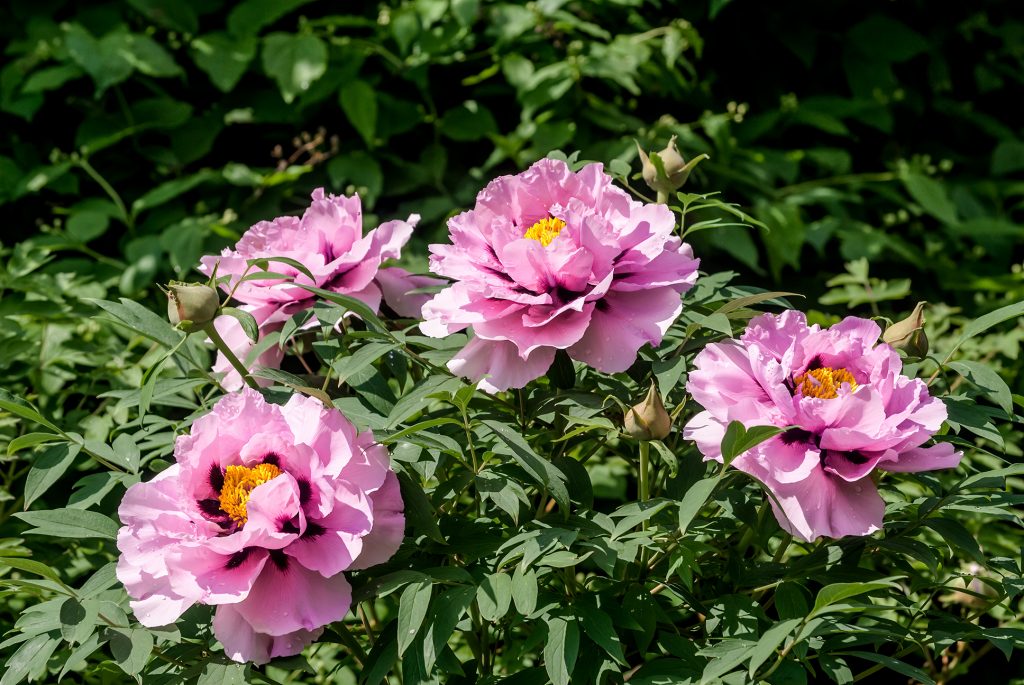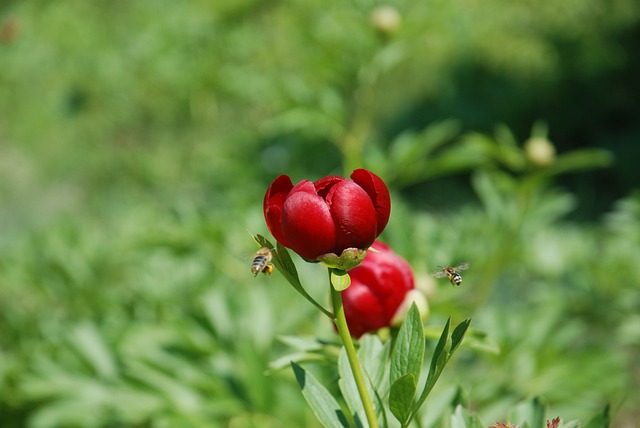


The Lafayette County Master Gardeners are pleased to welcome the public to their Annual Spring Lecture Series which will be held in the Dotsy A. Fitts Auditorium of the Public Library on 401 Bramlett Boulevard. Parking is available at the library or across the street at the Oxford Skate Park. The lectures will be held at Noon in the auditorium of the library. They are free and open to the public. The dates are Thursdays March 7, April 4, and May 2. Make sure you add these dates to your calendar. For more information or questions follow us on Instagram or Facebook, visit our website at http://www.lcmga.org or call the MSU Extension office at 662-234-4451.
The first program is on March 7 with speaker Dr. Christopher Cooper, County Director and Master Gardener Coordinator with the UT-TSU Shelby County Extension Service. The title of his presentation is “Nine Sustainability Principles.” These nine principles will assist residents and neighborhood associations with practices they can apply in their yards and common spaces to create healthier living spaces and communities. The aim of the presentation is to help homeowners achieve a landscape that reflects their values, desires, and needs, while ensuring the protection of invaluable waterways.

This is the second article in a series on peonies (genus Paeoniaceae). We will cover the three types of peonies: herbaceous, tree, and Itoh (also called intersectional). Herbaceous peonies (P. lactiflora) are the most common and feature bushy mounds that die back to the ground in winter. Tree peonies (P. suffruticosa & more) are upright, multi-stemmed and woody and the woody stems are maintained year-round for next year’s growth. Itoh/intersectional peonies are a hybrid of the herbaceous and tree peony and have short woody stems that die back to the ground in winter. This article will focus on tree peonies.
Tree peonies (Paeonia suffruticosa) are misnamed and are actually woody shrubs. They form woody branches that do not die back, but simply drop their leaves in the autumn, as does any deciduous shrub. The stems contain buds for next year’s growth so no pruning or cutting back is necessary. This plant blooms in mid to late spring before herbaceous peonies, and the flowers are exceptionally large. One specimen plant can produce 75–100 blossoms during the 2-month flowering period. Larger-flowered varieties will hold their flowers for a longer time if protected from the sun during the hottest part of the day. Too much shade or competition from tree roots inhibits flowering. After the bloom, tree peonies provide structure to the garden, with deep green foliage in summer that turns bronze and purple in fall. Tree peonies grow slowly, producing 1 to 6 inches of new woody growth each year. Think long-term when you are planting a tree peony; they will take about ten years to mature, and will live happily with minimal care for decades. No peony likes to be transplanted so find them a permanent home!
The best time to plant peonies is in the fall. Fall planting occurs October until the ground freezes for winter. When tree peonies are shipped bare root in the fall, they are freshly dug, and should be planted immediately, regardless of frost or freeze potential. If you are planting bare-root peonies in spring, it is likely that your peonies will produce minimal growth above ground the first year. If you are planting peonies that have been shipped in pots, there is potential that the buds will wither and the leaves will die back early. Don’t worry, this is normal. That said, diseases are more prevalent on peonies that have been planted in spring. Watch for botrytis and treat accordingly. There is an old adage when planting perennials: “First year roots, second year shoots, third year flowers.” Getting your peonies in in the spring gets a jump on things, giving your plant a good first spring of root development. Next year you are likely to have a reasonably sized peony with the potential of a flower or two. Be sure to sow the plant in the appropriate location: tree peonies can take full sun but prefer dappled light and protection from strong winds. Flowers will last longer if plants are shaded from strong afternoon sun. Tree peonies and reach a height of 3 to 7 feet and width of two to 5 feet. Width may be vertical, spreading or compact and is dependent on the cultivar. Be sure to follow the directions for your specific type of tree peony and allow adequate spacing for air circulation to minimize fungal disease. The plant requires well drained soil, standing water can cause root rot and kill the plant. Do not plant in low-lying areas that retain water, and be cautious when planting close to automatic sprinkler or irrigation systems. Peonies prefer neutral to alkaline soil. Ideal planting soil is a friable loam—a soft, rich, loose soil made of clay, sand, and compost. Peonies prefer a neutral pH of 6.5-7. Most often, you are looking to raise the pH. You can do this by adding lime and/or wood ash. Soil testing is recommended and can be submitted at our local extension office. Directions for collection and submitting a soil sample can be found here or by searching “soil sample” on our website at https://extension.msstate.edu/ A bare root tree peony should be planted deeper than herbaceous peonies. Dig a generous hole. If the root is grafted, the graft union should be 4 to 6 inches below the soil surface. If the peony is on its own rootstock (potted), the stem junction should be two inches below the soil surface. Once planted, press down on the soil to remove air pockets around the root and water your tree peony in well. During the first two growing seasons after planting a new tree peony, ensure that it gets a deep watering every two weeks. Ants are commonly seen on peony blooms. Ants are attracted to the sweet nectar produced in peony buds. The insects won’t harm the plant and are not required for the peony to properly bloom.
When maintaining your tree peonies, stems are brittle and need to be staked or protected from the wind. This plant is tolerant of partial shade, alkaline soils, heat, and deer. Once flowers are spent, remove the dead flower heads. In summer, lightly mulch peonies with shredded wood mulch keeping the mulch two to three inches from the base of the plant. When preparing for winter, do not mulch your tree peonies; they need the cold to flower in the spring, and mulch will insulate peonies from the cold.
Young plants are not drought tolerant and will require watering during dry spells. Established peonies are incredibly low maintenance and require little to no supplemental watering, except in times of extreme drought. When watering is required focus water on the ground and avoid wetting the leaves. Avoid fertilization with high nitrogen as this will produce lots of leaves and reduce flowering. Prune this plant in spring only to shape it; do not cut the stems to the ground in winter as with herbaceous peonies. Do not remove the woody stems of tree peonies, but clear fallen leaves and destroy to minimize disease. If there are branches that result from suckering from the herbaceous rootstock, remove those.
Tree peony propagation requires grafting and is not recommended for beginners.
Scale and thrips may damage tree peonies, but these insects can be eliminated with sprays of water or insecticidal soap. Avoid pesticide runoff around a tree peony or it could die. Tree peonies have some (but not all) of the same issues as herbaceous peonies when it comes to diseases and may experience canker, leaf blight, and stem wilt.
If peonies are your passion, consider attending the 2024 American Peony Society Convention in Bloomington, Minnesota on June 5, 6, 7, 8, 9. For more information, see the American Peony Society Webpage of select here.
References:
Clemson College of Agriculture, Forestry, and Life Sciences
P1826 Annual and Perennial Flowers for MS Gardens or search for P1826 at https://extension.msstate.edu/



